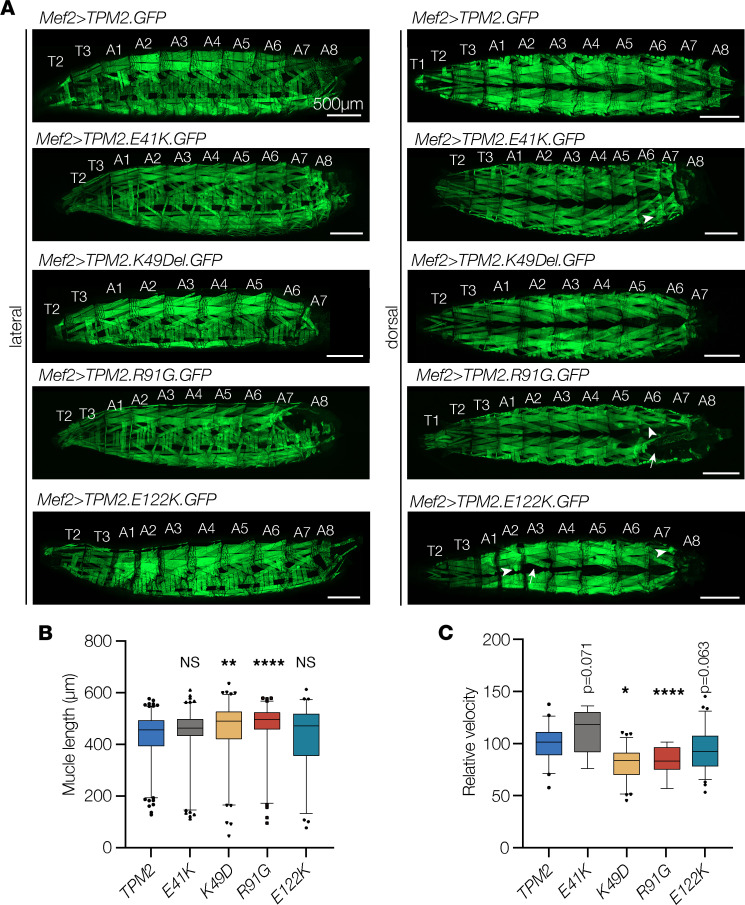Fig. 4
TPM2 variants disrupt muscle function in Drosophila. (A–C) Larvae that expressed TPM2 variants showed abnormal muscle morphology and impaired muscle function. (A) Confocal micrographs of live L3 larvae that expressed GFP-tagged TPM2 or pathogenic TPM2 variants (green) under the control of Mef2.Gal4. Larvae that expressed pathogenic variants often lacked muscles in segment A8. Muscles were also misshapen (arrowheads) or missing (arrow) in variant-expressing larvae. (B) Dorsal oblique muscle length (A2–A8). Muscles that expressed K49Del or R91G were significantly longer than controls. n ≥ 76 muscles per genotype. (C) Larval locomotion assays. Larvae that expressed K49Del or R91G were significantly slower than controls. n ≥ 9 larvae per genotype. Significance was determined by Kruskal-Wallis test. Error bars, SEM. *(P < 0.05), **(P < 0.01), ****(P < 0.0001). Scale bars, 500 μm.

